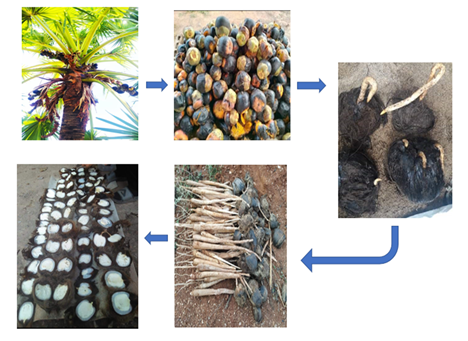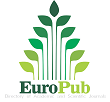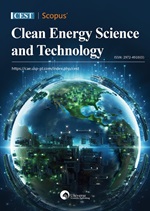An insight into the molecules and materials of the haustorium of the Asian Palmyra Palm (Borassus flabellifer) and their nutraceutical values
DOI:
https://doi.org/10.18686/fnc.v1i3.115Keywords:
palmyraculture; Asian Palmyra; Borassus flabellifer; haustorium; nutraceutical; bio-materialAbstract
The B. flabellifer L. has untapped potential in sustainable development and its products have many high food and medicinal values. Palmyraculture is defined as the plantation and utilization of Palmyra palm for self-reliance and sustainable development. The endosperm/embryo of germinated seeds is an important biomaterial, also known as haustorium. This paper provides comprehensive insights into the molecules of the haustorium, especially those of pharmaceutical and nutritional interests, and briefly explores other applications of haustoria. The discussions of seed germination, and consequently, the haustorium development have made their way in 21st-century research. With further advancements in chemical analytic techniques and the growing realization of diverse uses of nearly every part of the plant, more attention has been attracted to the phytochemical composition of the parts, including the haustorium. The recent research on the haustorium examines haustoria molecules, their respective functions and uses, and their interactions with external factors. During the period when the haustorium converts complex nutrients in the endosperm into simple forms for the growing embryo, it is composed of varying essential sugars, amino acids, phytochemicals, bioactive compounds, macro, and micronutrients, all of which are highly beneficial for human health. It also possesses glycosides, flavonoids, phenols, and saponins, which contribute to its medicinal properties of acting against hypertension, hypercholesterolemia, hyperglycemia, obesity, as anti-allergic, anticancer, and anti-neoplastic agents, and for fighting against oxidative stress. The most recent study on the haustorium highlights how its extracts serve as an efficient antioxidant and anti-inflammatory functional food. Future studies of the Palmyra palm haustorium could offer potential applications; emphasizing the pharmaceutical, nutritional, and ethnobotanical significance.

Downloads
Published
How to Cite
Issue
Section
License
Copyright (c) 2023 Sweety Angela Kuldeep, Vidhyashini Vijayakumar, Showmiya Segaruban, Yunitha Sinnathurai, Mohammed Saium Hossain, Kohinoor Begum, Jefwin Paul, Paulraj Mosae Selvakumar

This work is licensed under a Creative Commons Attribution-NonCommercial 4.0 International License.
References
1. McCurrach J. Palms of the World. Harper Bros; 1960.
2. Johnson D. Palms: Their Conservation and Sustained Utilization. Status Survey and Conservation Action Plan. Gland: International Union for Conservation of Nature; 1996. pp. 25–45.
3. Dransfield J. Genera Palmarum: The Evolution and Classification of Palms. Key Publishing; 2008.
4. Thevamirtha C, Monichan S, Selvakumar PM. Carbon-based materials from Borassus flabellifer and their applications. Journal of Environmental Nanotechnology 2021; 10(4): 8–12. doi: 10.13074/jent.2021.12.214445 DOI: https://doi.org/10.13074/jent.2021.12.214445
5. Thevamirtha C, Balasubramaniyam A, Srithayalan S, et al. An insight into the antioxidant activity of the facial cream, solid soap and liquid soap made using the carotenoid extract of Palmyrah (Borassus flabellifer) fruit pulp. Industrial Crops and Products 2023; 195: 116413. doi: 10.1016/j.indcrop.2023.116413 DOI: https://doi.org/10.1016/j.indcrop.2023.116413
6. Alexis Thayaparan CT, Kuldeep SA, Dewanjee S, et al. An insight into the structure and functions of flabelliferins and borassosides, nutraceuticals in Asian palm (Borassus flabellifer). Food Nutrition Chemistry 2023; 1(2): 31. doi: 10.18686/fnc.v1i2.31 DOI: https://doi.org/10.18686/fnc.v1i2.31
7. Prasad ARB, Vignesh S, Elumalai A, et al. Nutritional and pharmacological properties of Palmyra Palm. Food and Humanity 2023; 1: 817–825. doi: 10.1016/j.foohum.2023.07.030 DOI: https://doi.org/10.1016/j.foohum.2023.07.030
8. Monichan S, Thevamirtha C, Rajkumar RJ, et al. Palmyraculture: An insight into the nano medicines from Palmyra Palm (Borassus flabellifer L.). Acta Scientific Medical Sciences 2021; 5(11): 143–153.
9. Selvakumar PM, Nuzhat S, Quadrey MM, et al. Green nanomaterials: Design, synthesis, properties, and industrial applications. In: Handbook of Smart Materials, Technologies, and Devices: Applications of Industry 4.0. Springer International Publishing; 2022. pp. 1–19. DOI: https://doi.org/10.1007/978-3-030-58675-1_98-1
10. Varadaraju C, Selvakumar Paulraj M, Tamil Selvan G, et al. An insight into Asian Palmyra Palm fruit pulp: A fluorescent sensor for Fe2+ and Cd2+ ions. Materials Today: Proceedings 2021; 47: 747–750. doi: 10.1016/j.matpr.2020.06.532 DOI: https://doi.org/10.1016/j.matpr.2020.06.532
11. Uhl NW, Dransfield J. A Classification of Palms Based on the Work of Harold E, Moore Jr. Genera Palmarum; 1987.
12. Johnson DV. Palm conservation: Its antecedents, status and needs. In: World Palm Symposium at Fairchild Tropical Botanical Garden on October. IUCN Publications Services Unit; 1995.
13. Tomlinson PB. Anatomy of the Monocotyledons, Volume 2: Palmae. Oxford University Press; 1961.
14. Mukherjee AK, Choudhury D, Bagchi P. Constitution of the galactomannan from the kernel of green Palmyra Palm nut (Borassus flabellifer linn.). Canadian Journal of Chemistry 1961; 39(7): 1408–1418. doi: 10.1139/v61-180 DOI: https://doi.org/10.1139/v61-180
15. Keusch L. The mobilization of reserve mannan in the germinating date seed (German). Planta 1968; 78(4): 321–350. doi: 10.1007/bf00387091 DOI: https://doi.org/10.1007/BF00387091
16. Dassanayake MD, Sivakadachchan B. Germination and seedling structure of Borassus fiabellifer L. Ceylon Journal Science 1973; 10:157–166.
17. Veerasamy S. Polyembryony and twin seedlings in Borassus flabellifer L. (Palmae). Botanical Journal of the Linnean Society 1982; 85(2): 147–152. doi: 10.1111/j.1095-8339.1982.tb00590.x DOI: https://doi.org/10.1111/j.1095-8339.1982.tb00590.x
18. Alang ZC, Moir GFJ, Jones LH. Composition, degradation and utilization of endosperm during germination in the oil palm (Elaeis guineensis Jacq.). Annals of Botany 1988; 61(2): 261–268. doi: 10.1093/oxfordjournals.aob.a087553 DOI: https://doi.org/10.1093/oxfordjournals.aob.a087553
19. DeMason DA. Embryo structure and storage reserve histochemistry in the palm Washingtonia filifera. American Journal of Botany 1988; 75(3): 330–337. doi: 10.1002/j.1537-2197.1988.tb13447.x DOI: https://doi.org/10.1002/j.1537-2197.1988.tb13447.x
20. DeMason DA, Sekhar KNC, Harris M. Endosperm development in the date palm (phoenix dactylifera) (arecaceae). American Journal of Botany 1989; 76(9): 1255–1265. doi: 10.1002/j.1537-2197.1989.tb15107.x DOI: https://doi.org/10.1002/j.1537-2197.1989.tb15107.x
21. Viji V, Chandra R, Salim PN, Puthur JT. Germination associated morphological and anatomical changes in Coryphaumbraculifera L. seeds. Phytomorphology 2015; 65(1/2): 11–17.
22. Srivastava LM. Seed food reserves and their accumulation. Plant Growth and Development 2002; 503–520. doi: 10.1016/b978-0-12-660570-9.50178-7 DOI: https://doi.org/10.1016/B978-0-12-660570-9.50178-7
23. Baskin JM, Baskin CC. What kind of seed dormancy might palms have? Seed Science Research 2013; 24(1): 17–22. doi: 10.1017/s0960258513000342 DOI: https://doi.org/10.1017/S0960258513000342
24. Srivijeindran S, Jayaweera C, Navaratnam P. Optimizing the harvesting time of Palmyrah (Borassus flabellifer) haustorium to retain its nutrient content without affecting the development of tuber. Journal of Natural Product and Plant Resources 2016; 6: 12–20.
25. Davis TA, Johnson DV. Current utilization and further development of the Palmyra Palm (Borassus flabellifer L., Arecaceae) in Tamil Nadu state, India. Economic Botany 1987; 41(2): 247–266. doi: 10.1007/bf02858972 DOI: https://doi.org/10.1007/BF02858972
26. Flach M, Rumawas F. Borassus flabellifer L. In: Plant Resources of South-East Asia. Backhuys Publishers; 1996. pp. 59–63.
27. Haynes J, McLaughlin J. Edible Palms and Their Uses. University of Florida; 2000.
28. Mariselvam R, Ignachimuthu SJ, Mosae PS. Review on the nutraceutical values of Borassus flabelifer Linn. Journal of Pharmaceutics and Drug Research 2020; 3: 268–271.
29. Selvakumar PM, Thanapaul RJRS. An insight into the polymeric structures in Asian Palmyra palm (Borassus flabellifer Linn). Organic Polymer Material Research 2021; 2(2). doi: 10.30564/opmr.v2i2.2639 DOI: https://doi.org/10.30564/opmr.v2i2.2639
30. Wongsinchuan N, Sirinupong M. The studies of fresh weight and nutrition composition of Palmyra Palm (Borassus flabellifer L.) haustorium at the different incubation period. Thai Agricultural Research Journal (Thailand) 2014; 32(3): 268–275.
31. Pollachat A, Wongsinchuan N, Suanphairoch S. Total phenolic contents and antioxidant activity in Palmyra Palm (Borassus flabellifer L.) haustorium at the different incubation period. In: Proceedings of 53th Kasetsart University Annual Conference; 3–6 February 2015; Bangkok. pp. 622–628.
32. Tharmaratnam G, Navaratnam P, SriVijeindran S. Preservation of Palmyrah haustorium, young fruit kernel and boiled tuber with lengthen shelf-life consisting their native characters. Annals of Biological Research 2018; 9(2): 1–10.
33. Vengaiah PC, Kumara VB, Murthy GN, Prasad KR. Physico-chemical and functional characteristics of Palmyrah (Borassus flabellifer L.) spongy haustorium flour. Journal of Nutrition and Health Science 2019; 6(1).
34. Malayil D, House NC, Puthenparambil D, et al. Borassus flabellifer haustorium extract prevents pro-oxidant mediated cell death and LPS-induced inflammation. Drug and Chemical Toxicology 2020; 45(4): 1716–1722. doi: 10.1080/01480545.2020.1858854 DOI: https://doi.org/10.1080/01480545.2020.1858854
35. Sudhakar R, Murthy TGK, Rao CC, et al. Entrepreneurship in Palmyrah Fibre. Central Tobacco Research Institute (ICAR); 2012.
36. Sankaralingam A, Hemalatha G, Ali AM. A Treatise on Palmyrah. All India Coordianated Research Project on Palms, Agricultural College and Research Institute, Tamil Nadu Agricultural University and Central Plantation Crops Research Institute, Indian Council of Agricultural Research; 1999.
37. Srivastava A, Bishnoi SK, Sarkar PK. Value addition in Palmyra Palm (Borassus flabellifer L.): A potential strategy for livelihood security and poverty alleviation. Rashtriya Krishi 2017a; 12(1): 110–112.
38. Srivastava A, Bishnoi SK, Sarkar PK. Value addition in minor fruits of eastern India: An opportunity to generate rural employment. In: Dutta AK, Mondal B (editors). Fruits for Livelihood: Production Technology and Management Practices. Agrobios (India); 2017. pp. 395–417.
39. Krishnaveni TRS, Arunachalam R, Chandrakumar M, et al. Potential review on Palmyra (Borassus flabellifer L.). Advances in Research 2020; 21(9): 29–40. doi: 10.9734/air/2020/v21i930229 DOI: https://doi.org/10.9734/air/2020/v21i930229
40. Saranya P. Characterization of Palmyra Fruit Borassusflabelliferlinn Pulp and Development of Ready to Serve Beverage from Palmyra Fruit Pulp [PhD thesis]. Periyar University; 2016.
41. Vengaiah P, Kaleemullah S, Madhava M, et al. Palmyrah fruit (Borassus flabellifer L.): Source of immunity and healthy food: A review. The Pharma Innovation Journal 2021; 10(11): 1920–1925.
42. Jeyaratnam M. Studies on the Chemistry and Biochemistry of Palmyrah Products [PhD thesis]. University of Jaffna; 1986.
43. Jansz ER, Wickremasekara NT, Sumuduni KAV. A review of the chemistry and biochemistry of seed shoot flour and fruit pulp of the Palmyrah Palm (Borassus flabellifer L). Journal of the National Science Foundation of Sri Lanka 2002; 30(1–2): 61. doi: 10.4038/jnsfsr.v30i1-2.2562 DOI: https://doi.org/10.4038/jnsfsr.v30i1-2.2562
44. Naguleswaran S, Vasanthan T, Hoover R, et al. Structure and physicochemical properties of Palmyrah (Borassus flabellifer L.) seed-shoot starch grown in Sri Lanka. Food Chemistry 2010; 118(3): 634–640. doi: 10.1016/j.foodchem.2009.05.046 DOI: https://doi.org/10.1016/j.foodchem.2009.05.046
45. Prasad ARB, Arunkumar A, Vignesh S, et al. Exploring the nutritional profiling and health benefits of Palmyra Palm haustorium. South African Journal of Botany 2022; 151: 228–237. doi: 10.1016/j.sajb.2022.01.027 DOI: https://doi.org/10.1016/j.sajb.2022.01.027
46. Breyer-Brandwijk MG, Watt JM. The Medicinal and Poisonous Plants of Southern and Eastern Africa being an Account of their Medicinal and other Uses, Chemical Composition, Pharmacological Effects and Toxicology in Man and Animal. E & S Livingstone Ltd; 1962.
47. Robards K, Prenzler PD, Tucker G, et al. Phenolic compounds and their role in oxidative processes in fruits. Food Chemistry 1999; 66(4): 401–436. DOI: https://doi.org/10.1016/S0308-8146(99)00093-X
48. Manilal KS, Remesh M. An analysis of the data on the medicinal plants recorded in Hortus Malabaricus. Samagra: CRIKSC Journal 2009; 5&6.
49. Vijayakumari B, Vengaiah PC, Kiranmayi P. Qualitative phytochemical screening, GC-MS analysis and antibacterial activity of Palmyra fruit pulp (Borassus flabellifer L.). International Journal of Pharma and Bio Sciences 2015; 6(2): 430–435.
50. Gonsalves J. Economics Botany and Ethnobotany. International Scientific Publishing Academy; 2010.




.jpg)
.jpg)

